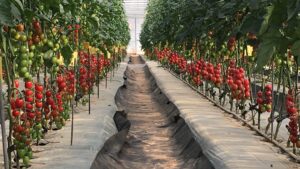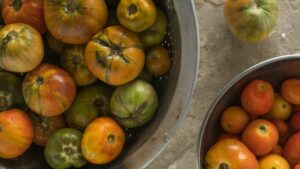The aim of the European Seed series on Myths, Fake News, Misinformation and Disinformation is to dive deeper, taking a closer look at a variety of seed related topics. This article looks at ‘hybrid crops’ which are well-known and widely grown. Nonetheless, several myths surround hybrids, and these myths should be unravelled.
Read part one here.
Myth 4: Hybrids are too expensive for smallholders
Fact: Smallholders in developing countries are also growing hybrids. For home-consumed or ‘subsistence’ crops, hybrid seed is uncommon. However, for commercial crops like maize and tomato with large established markets, many smallholders are willing and able to invest in hybrids. Organisations like One Acre Fund or Fair Planet are raising awareness amongst smallholders regarding the impact of quality seed on their yield. Moreover, they train farmers in good agricultural practices to maximize returns on this investment. Smallholders may also adopt hybrids to be able to tweak their production planning. Smallholders tend to produce the same crop at the same time and hence, they all sell when the market is flooded, and prices are low. Hybrids with strong resistance against fungal diseases or a shorter growing cycle enable them to grow their crop slightly earlier or later, fetching a (much) higher price.
Myth 5: Genetic diversity in plant varieties suffers from hybridization
Genetic diversity in varieties is perceived to decrease, and sometimes associated with the spreading use of hybrid varieties.
To set the scene, it should be realized that crop domestication, which depending on the species, took place between 3,000 and 12,000 years ago, was the process in which humans selected for desired crop traits. And in that process a lot of crop diversity has been lost, particularly for genes that were targeted by the domestication, such as seed shattering or fruit abscission. Studies have shown to sometimes up to 60 per cent, or even more, of the nucleotide diversity within that species was lost, as well as a significant decrease in gene expression.
When discussing modern day genetic diversity in varieties, one way to approach the issue is to make a distinction between in situ, ex-situ and on-farm genetic diversity in varieties. In situ refers to genetic diversity within that species in nature. Ex situ refers to genetic diversity in a species ‘outside’ nature in gene banks or breeders’ collections. Ex situ diversity increases through collection missions in nature or traditional farming systems in primary or secondary centres of diversity of a crop. Ex-situ diversity is incredibly important for plant breeding and hence, breeding is a major driver of these efforts. On-farm refers to diversity in varieties in farmer fields.
Many research papers have looked at the genetic diversity of varieties, including a meta-analysis based on data from 44 published papers (van de Wouw et al, 2010). This study on agricultural field crops, addressed diversity trends in released crop varieties of eight different field crops in the 20th century. The study encompassed variety diversity in many countries in the world, not only in Europe and North America. Wheat was the most represented crop, with 26 out of the 44 papers. For wheat, the lowest diversity occurred in the period from the 1960s until the 1980s. This decrease was 6 per cent compared to the first half of the century and was significant. However, a recovery of diversity was observed in the 1990s. For seven other major crops (barley, maize, oat, flax, soybean, pea, rice), a dip in diversity was also observed in the 1960s, but the recovery was earlier compared to wheat.
A similar and even stronger increase in genetic diversity can be seen in vegetable crops, for example tomato. A recent study (Schouten et al, 2019) looked at the diversity dynamics of greenhouse tomato varieties in NW Europe over the last seven decades. The study provided compelling evidence that plant breeding has in fact increased the diversity of tomato varieties eight-fold since the 1960s.
In conclusion: the concern that modern plant breeding is decreasing diversity among varieties, is not at all supported by scientific evidence. In contrast, a tremendous increase in diversity was observed, both at the genotypic and phenotypic level. Since more and more varieties are F1-hybrids, it can also be concluded that hybridization per se has no negative effect on genetic diversity.












